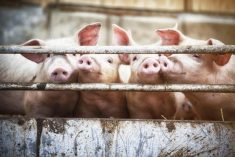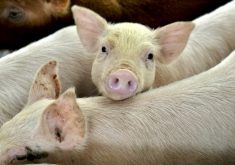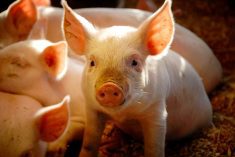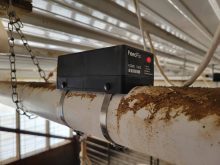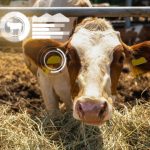The porcine epidemic diarrhea (PED) virus has hit producers hardest south of the border, but it was the first Canadian case that helped researchers find the source of the disease.
Speaking to pork producers in Niverville, Tim Snider of the University of Minnesota said that the emergence of the disease in Canada provided the biggest clue pointing towards feed as the source of the outbreak.
“When it showed up in Canada, basically in my mind that’s the turning point in the United States for how it looked at feed ingredients as a potential risk pathway,” said Snider. “If you think about it, before that point… even when feed was suspected, lateral spread from other points of entry was always possible, the infrastructure in the United States was completely contaminated, so to be able to figure out where it came from truly was difficult.”
Read Also
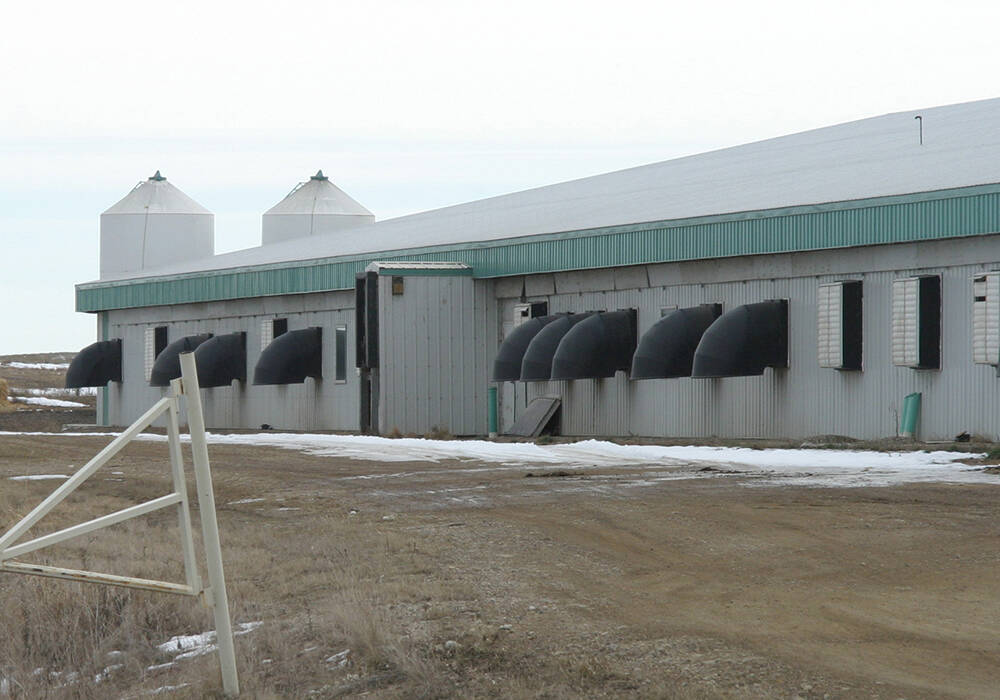
Get the best air in your hog barn
Farmers who pay more attention to ventilation, humidity, air pressure and temperature in the hog barn can get pigs gaining weight faster and keep them comfortable
But while American infrastructure was heavily contaminated with the PED virus, Canada’s wasn’t.
“The Canadian outbreak in southern Ontario was a completely different scenario, it was an outbreak in a vacuum, there were no other affected herds and there was a common epidemiological link with a feed mill, so everybody turned their head towards that case,” he said.
Potential risks
Snider has been researching the potential risks of different feed ingredients, along with processing and transport methods; his work will be published later this month along with the work others have done on PED.
For him it’s clear that the virus — which has been active in Asia for a decade — was likely introduced by contaminated feed.
Whether processing feed ingredients like spray-dried blood plasma or rendered bone meal successfully kills all of the virus, or leaves it still capable of infection is still being debated in some corners. The possibility that feed can be contaminated post-production is also a real risk.
“I think the take-home message is that the virus should die, but there is potential for post-manufacturing cross-contamination, so it’s very much dependent on where you’re getting your product from… rendered products can be contaminated post-production,” he said, noting that many feed products are blended in post-production to ensure nutritional uniformity.
However, it is extremely unlikely that any virus could withstand the rendering processing. Not so for other processing methods.
“When it comes to spray dried, the potential for contamination is at the collection point, everybody accepts that these products are contaminated with disease when they get them. The question is whether or not it survives the process,” Snider said, noting that process is a closed and extremely hygienic one, making cross-contamination unlikely.
Odds of survival
But the greater the amount of virus present when processing begins, the greater the chance some of it will survive. Post-processing can also be used to kill the PED virus — leaving feed in storage at room temperature for two weeks has been proven to kill the PED virus, he said.
But before swine-derived feed additives are tossed, Snider added that removing them from feed would also have impacts on the pork industry.
“I think we need to keep that in mind before we deep-six this,” he said.
While biosecurity remains key, the researcher believes that eliminating contaminated pig feed should help stymie the spread of the disease.
It may also help explain in part why Canada was able to hold out against the disease for so much longer than the U.S.
“Canada is in a great position compared to the United States when it comes to this outbreak. Being in a country that is positive, but basically, primarily negative, you’re in a great position having had that year of preparedness,” Snider said. “And when you got affected, you responded extremely well, your position is enviable and I can tell you that the United States industry often holds up the Canadian example as the way it should have done it.”




